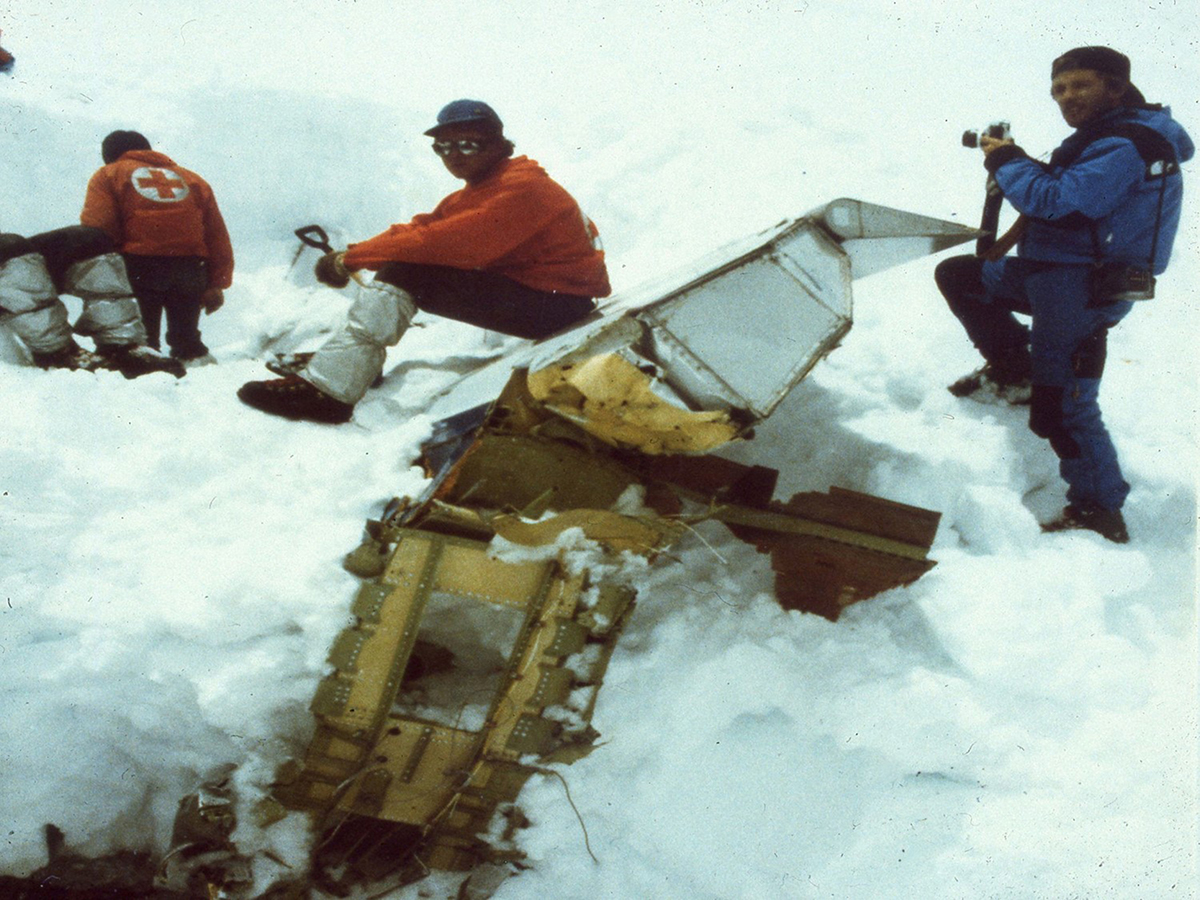Standing in a field of debris consisting of airframe parts, bits and pieces of wiring, luggage and bodies—the remnants of a tragic aircraft crash—Greg Feith (’81, DB), former senior air safety investigator and “Go-Team” captain for the National Transportation Safety Board (NTSB), sees hope.
“When you’re trying to process that a family, or hundreds of people perished in an accident, I look at it—not with an emotional attachment to the victims, but with a sense of purpose—to try to prevent it from happening again. I’ve always used the surviving families and the victims as motivators,” he says.
A renowned international aviation safety and security consultant, media spokesperson and expert witness on the topic, Feith has investigated more than 2,500 aircraft accidents worldwide since he started his career 36 years ago. In January 2016, he was inducted into the Living Legends of Aviation, in acknowledgement of his significant contributions to aviation. The Legends, which include entrepreneurs, innovators, industry leaders, record breakers, astronauts and pilots, nominate and select the inductees each year.
Feith says he’s honored by the recognition, but for him the greatest reward is intrinsic. “I’m not going to save the world, but I know that every single day that I do my job, I’m contributing to making aviation safer. One of my greatest accomplishments is the fact that through perseverance and passion I found something that I absolutely love.”
An Epiphany on a Mountain
Feith’s love affair with aviation safety started in 1980, as a student at Embry-Riddle. He participated in a cooperative training program at the NTSB and was hooked.
“It happened while I was investigating my third accident,” he says. “I’m standing on top of this mountain in Truckee, California. It’s a beautiful blue-sky day and I’m in the middle of a Cessna 210 that had crashed and killed a family of six. [See banner photo above]. I’m standing up there and it hit me. It was like, ‘Greg this is what you’re going to do for the rest of your life.’ It changed my entire career that day on top of that mountain, and I’ve never done anything else except aviation safety. I still fly—I love to fly. I love every aspect of aviation, but I really love accident investigation.”
It’s been a whirlwind ever since. After performing two co-op semesters back-to-back at the NTSB, Feith accepted a full-time position with the agency in 1981, becoming the youngest investigator on staff. “They took a chance on me,” he says.
Feith became the roaming investigator, working in locations that were low-staffed or that had an extenuating need. He quickly gained experience. “My timing working for the NTSB in the 80s, 90s and early 2000s was such that we had a lot of hull losses all over the world. My upper management had a lot of confidence in my ability as a leader, and that’s why I ended up doing a lot of accidents. At one time, I was working five major accidents [1994-1996].”

Young and single at the time, he volunteered for more risky missions, as well. When Eastern Airlines Flight 980 crashed in 1985 into Mount Illimani in Bolivia at an elevation of 20,000 feet, Feith stepped up to lead the investigation. Fighting extreme cold and the physiological challenges of working in high altitudes, the search team located the accident site—to this day the highest crash scene of a commercial aircraft controlled flight into terrain. The wreckage, however, was buried under 30 feet of snow. The team was unable to find the coveted “black box.”
“We were on the mountain 10 days. We would probe the snow until we found something larger than a dining room table. We did dig out the whole tail section,” Feith says.
In the end, Feith had to piece the investigation together based on technical evidence. “They drifted off course at night. They didn’t see what they hit,” he says.
Going Beyond Accident Investigation
For Feith there is a predominant question that drives his work. Why? “We can usually figure out what happened. But the question is why would the pilot make this decision? The why is the hardest part.”
Dan McCune, director of safety at Embry-Riddle, says Feith’s years of experience make him an ideal teacher for flight students and new flight instructors. A regular speaker at the university and an instructor of Embry-Riddle’s professional education safety courses, Feith is always willing to share his expertise. “From the moment he opens his mouth, the flight instructors follow his every word,” McCune says. “He takes his knowledge beyond accident investigation and applies it to accident prevention.”

A former member of the Embry-Riddle President’s Advisory Council and the Aerospace Safety and Education Industry Advisory Council, in 2001 Feith was honored with the Distinguished Alumni Award for his contributions to the industry and the university.
“There’s no doubt that he’s passionate about aviation safety. He has a deep passion to make a meaningful difference,” says Brian Roggow, aviation safety program manager for flight at Embry-Riddle’s Prescott Campus.
Since retiring from the NTSB in 2001, Feith has continued to do just that. He volunteers for several nonprofits, including Shades of Blue, an organization that gives underprivileged kids opportunities to experience flight; and he’s launched two safety products: LapKidz, a Federal Aviation Administration-approved child restraint system for infants and toddlers, and the SMART Emergency Location Transmitter (ELT), in partnership with InFlight Labs.
The ELT can be activated in flight before a crash to track an aircraft in distress, says Feith, who is also designing a modified version of the LapKidz device to prevent child drowning accidents in bathtubs.
“I don’t just want to talk about the problems—I want to be part of the solution,” he says.
